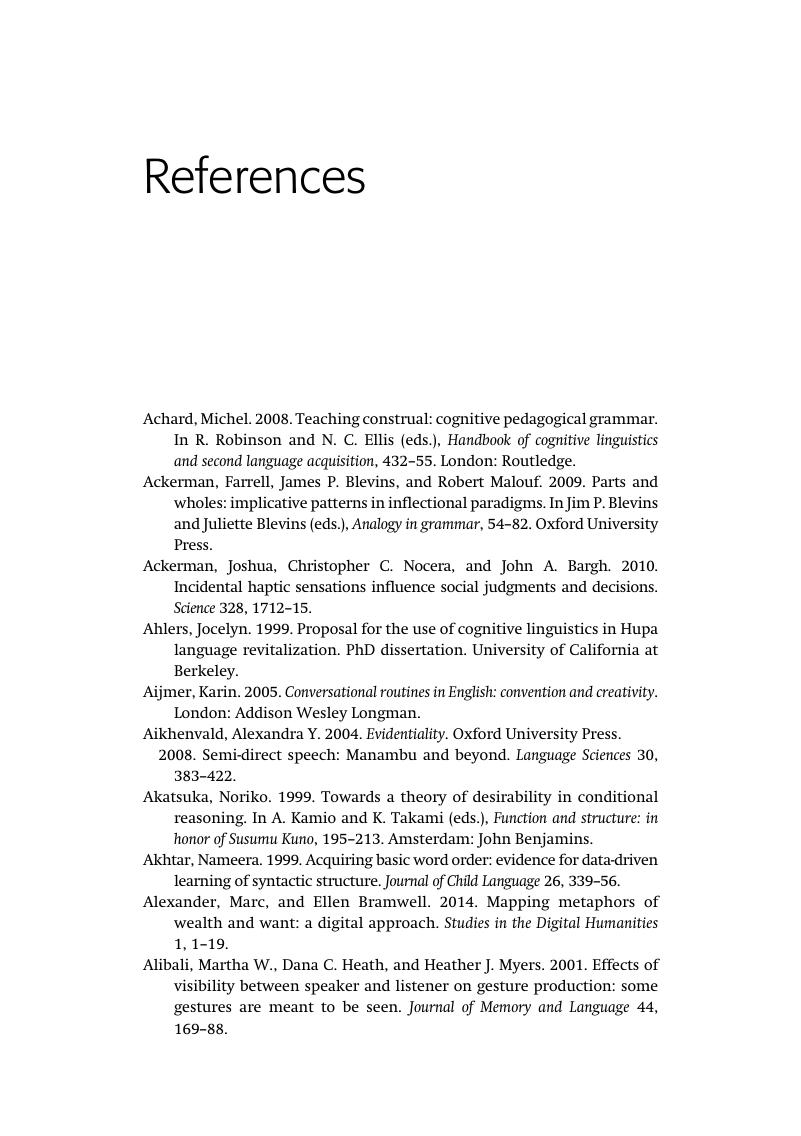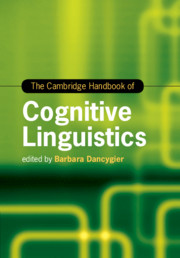Book contents
- The Cambridge Handbook of Cognitive Linguistics
- Cambridge Handbooks in Language and Linguistics
- The Cambridge Handbook of Cognitive Linguistics
- Copyright page
- Dedication
- Contents
- Figures
- Tables
- Contributors
- Acknowledgments
- Introduction
- Part I Language in Cognition and Culture
- Part II Language, Body, and Multimodal Communication
- Part III Aspects of Linguistic Analysis
- Part IV Conceptual Mappings
- Part V Methodological Approaches
- Part VI Concepts and Approaches: Space and Time
- References
- Index
- References
References
Published online by Cambridge University Press: 01 June 2017
- The Cambridge Handbook of Cognitive Linguistics
- Cambridge Handbooks in Language and Linguistics
- The Cambridge Handbook of Cognitive Linguistics
- Copyright page
- Dedication
- Contents
- Figures
- Tables
- Contributors
- Acknowledgments
- Introduction
- Part I Language in Cognition and Culture
- Part II Language, Body, and Multimodal Communication
- Part III Aspects of Linguistic Analysis
- Part IV Conceptual Mappings
- Part V Methodological Approaches
- Part VI Concepts and Approaches: Space and Time
- References
- Index
- References
Summary

- Type
- Chapter
- Information
- The Cambridge Handbook of Cognitive Linguistics , pp. 684 - 816Publisher: Cambridge University PressPrint publication year: 2017



